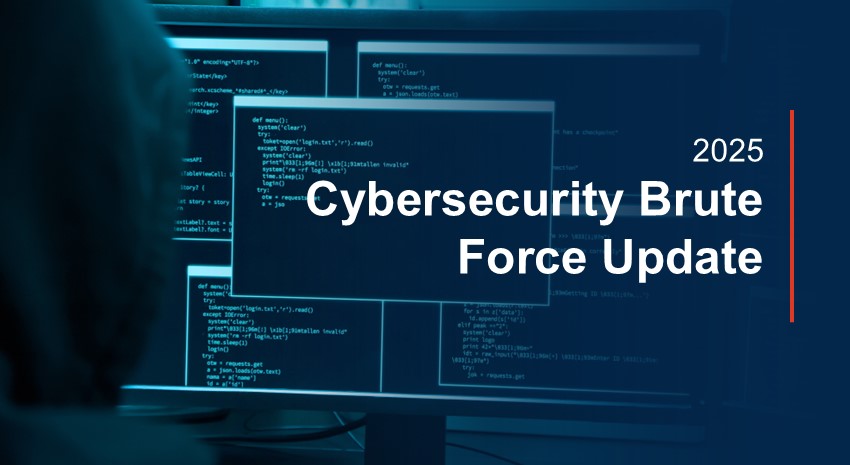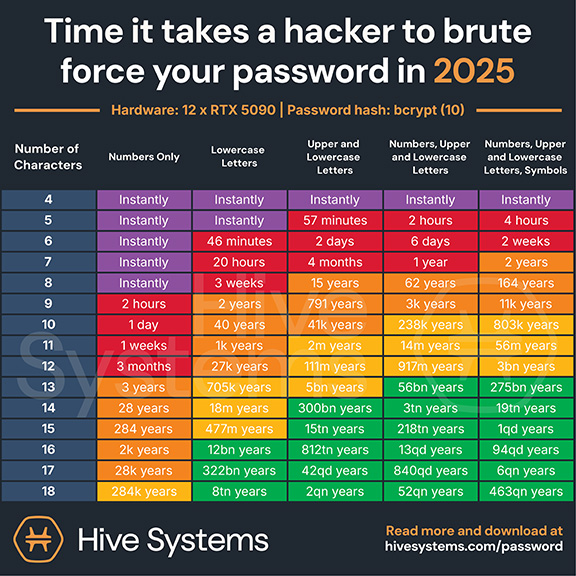Brute Force Password Cracking: How Businesses Can Stay Protected

In today’s digital business environment, passwords remain the first—and sometimes only—line of defense that stands between cybercriminals and sensitive business data. Among the many tactics used to compromise credentials, brute-force password cracking remains one of the most persistent and dangerous threats. While not the most sophisticated method, brute force attacks are relentless and increasingly automated, putting businesses of all sizes at risk.
What Is brute force password cracking?
Brute force password cracking is a method used by attackers to gain unauthorized access to accounts or systems by systematically guessing passwords until the correct one is found. These attacks can take several forms:
- Simple brute force attacks: Try every possible password combination without any optimization.
- Dictionary attacks: Use precompiled lists of common passwords and variations to speed up the process.
- Credential stuffing: Reuse stolen usernames and passwords from previous data breaches to see if one works.
- Hybrid attacks: Combine dictionary lists with character variations and known user behavior patterns (e.g., adding “123!” to a common word).
With the help of powerful software and cloud-based computing, hackers can launch thousands—or even millions—of automated password attempts in seconds. This danger is made even worse when login pages don’t limit the number of retries or offer additional safeguards, like multifactor authentication (MFA).
Securing passwords using hashing algorithms
Computer systems secure user passwords using hashing algorithms. A password hashing algorithm converts a password into an irreversible, fixed-length string (a hash). When a user logs in, their password is run through the hashing algorithm and compared to the stored hash to find a match before authenticating the user.
However, not all hashing algorithms are secure for storing passwords. General-purpose algorithms like MD5, SHA-1, or SHA-256 are too fast—they were built for speed, which makes them vulnerable to brute force or dictionary attacks.
Two techniques added to hashing algorithms are designed to hinder brute-force attacks: “salting” and intentionally slowing down the CPU’s processing of the algorithm.
- Salting adds a random string of characters (a “salt”) to the password before it’s hashed. This ensures that every password hash is unique, even if users choose the same password.
- By utilizing memory- and CPU-intensive computations to create the hash, the algorithm makes it expensive for attackers to attempt to crack hashed passwords.
Most modern systems utilize slower, computationally intensive algorithms such as bcrypt, scrypt, and Argon2.
Why should businesses be concerned?
Brute force attacks target a wide range of potential vulnerabilities, including:
Compromised user accounts – If your employees or customers use weak or reused passwords, they become easy targets. Once an attacker gains access to one account, they can potentially move laterally through the organization’s network.
Credential reuse across systems – Many users reuse the same login credentials across personal and professional platforms. A password stolen from a less secure site could provide access to enterprise systems if the same credentials are used.
Downtime and system strain – Even failed brute force attacks can cause service disruptions. Repeated login attempts may overload authentication servers, slow down performance, or even cause denial-of-service (DoS) conditions.
Compliance and legal risk – Industries governed by regulations such as HIPAA, GDPR, or PCI-DSS must demonstrate strong access controls and data protection. A successful brute force attack could lead to costly fines, reputational damage, and legal exposure.
Targeted vs. opportunistic threats – Brute force attacks aren’t always random. Sophisticated attackers may use them in targeted campaigns, aiming to compromise high-value accounts—like those of executives, administrators, or financial staff.
What does it take to crack a password with brute force these days?
While graphics cards are primarily used for displaying images on your computer, they are also useful for performing rapid calculations – for example, calculating hashes. The RTX 5090 is currently the most advanced graphics card from NVIDIA available to consumers.
Hive Systems recently published their assessment of how long it would take a hacker using 12 RTX 5090 graphics cards to crack passwords of varying lengths and character sets using brute force techniques.

As the chart illustrates, passwords that incorporate long combinations of uppercase and lowercase letters, digits, and special characters are effective in slowing or stopping brute-force attacks. However, no matter how complex it is, once a password has been compromised, hackers will waste no time trying it on other systems.
Best practices to defend against brute force attacks
The good news is that brute-force attacks are preventable with the proper safeguards. Below are industry best practices every organization should implement:
Enforce strong password policies – Require complex, unique passwords that are difficult to guess. Avoid dictionary words, predictable patterns, or common substitutions (e.g., “P@ssw0rd!”). Use passphrases or long strings of unrelated words as a more secure and memorable alternative.
Implement multifactor authentication (MFA) – Even if a password is compromised, MFA adds a second layer of protection, such as a code sent via SMS, an authenticator app, or a biometric scan. While not foolproof, this dramatically reduces the risk of unauthorized access.
Limit login attempts – Rate limiting, CAPTCHA challenges, and account lockouts after several failed login attempts can significantly slow down or stop brute force attacks. Configure thresholds carefully to strike a balance between security and user experience.
Use credential hashing and salting – On the back end, ensure stored passwords are encrypted using secure hashing algorithms like bcrypt, scrypt, or Argon2, with unique salts to prevent rainbow table attacks.
Monitor login activity – Track and analyze login attempts for patterns such as unusual IP addresses, geolocation mismatches, or high-frequency login failures. Alert security teams to anomalies in real time.
Deploy web application firewalls (WAFs) – A WAF can help detect and block suspicious login behavior or brute-force scripts targeting your web applications.
Educate your users – Employees are often the weakest link in cybersecurity. Provide regular training on password hygiene, phishing awareness, and the importance of MFA. Encourage them to use password managers to store and generate strong credentials.
Rotate passwords and review permissions – Regularly rotate administrator passwords and audit user access privileges. Remove inactive accounts and use the principle of least privilege to reduce the potential attack surface.
Protect your company and your data
Brute-force password cracking remains one of the most common and effective methods that cybercriminals use to breach businesses. With the rise of automated attack tools and AI-driven password guessing, organizations must stay ahead of the curve.
Don’t wait for a breach to reveal weak points in your access controls. Take a proactive approach by enforcing strong password policies, implementing multifactor authentication, and monitoring for suspicious activity. These defenses not only protect against brute-force attacks but also improve your overall cybersecurity posture.
Learn more about protecting your company from cybersecurity threats by downloading our eBook, Cybersecurity Threats & Countermeasures: Protecting Your Company from External and Internal Threats.
Contact the security experts at ArcherPoint by Cherry Bekaert for help managing your cybersecurity environment.
Trending Posts
Stay Informed
Choose Your Preferences
"*required" indicates required fields
